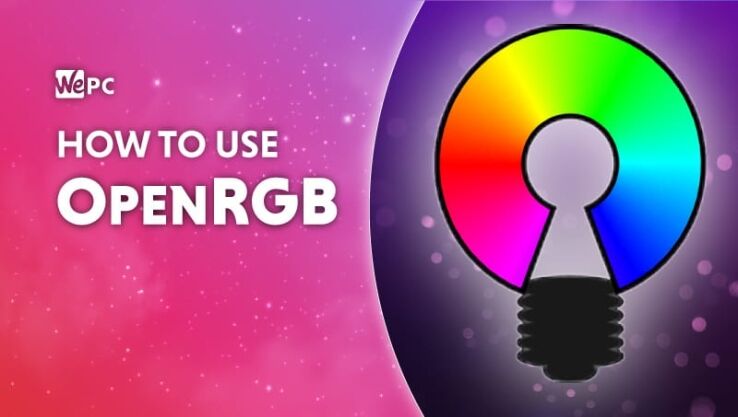OpenRGB: The ultimate guide
Tired of having multiple programs to control all of your RGB? Try OpenRGB

WePC is reader-supported. When you buy through links on our site, we may earn an affiliate commission. Prices subject to change. Learn more
OpenRGB might be exactly what you need. These days, everything has RGB lighting, mice, keyboards, mousepads, bungees, RAM, GPUs, coolers, cases, even desks and chairs. The list is exhaustive and covers pretty much the entirety of PC gaming technology, and it’s only getting more and more ubiquitous. If you’ve acquired any RGB devices, and by this point, we’d be surprised if you hadn’t, then you’ll be all too familiar with the problem that OpenRGB can solve.
Essentially, every manufacturer has its own RGB utility, usually containing superfluous additional functionality. Razer has Synapse 3, Corsair has iCUE, ASUS has armory crate. There are entirely too many to list and as usual with big companies, none of them are cross-compatible. This is of course to encourage you to buy into their ecosystem, to only use their products as that is the only way you can have total control and synchronicity of your peripherals and hardware.
So you’re left with two choices, either buy everything from one company or attempt to juggle three of four different lighting utilities. All of which must be running concurrently to keep the light show blazing. This compounds a fundamental issue of these lighting utilities, they are frightfully taxing on your system, oftentimes taking sizable chunks of RAM and using an unreasonable quantity of processing power.
What is OpenRGB?
OpenRGB seeks to address the problems created by these stubborn companies by providing a free-to-use, lightweight, universally compatible utility. We’ve been using it for a few days with a vast array of different devices and now we are going to show you how to make the most of your RGB, regardless of the brand of the respective device. It’s rapidly becoming more and more popular so the sooner you read this guide, the sooner you can delete all those pesky drivers and concentrate on gaming.
How to use OpenRGB
Luckily, it appears that OpenRGB has kept its promise of being lightweight and easy to use. It eschews the clunky and over-designed facades of the big boy’s programs. It’s a very simple interface that has been designed with a smooth user experience and ease-of-use in mind. Some might call it basic, but given that it’s going to live minimized down in the taskbar, there’s no reason for it to be too fancy.
Upon first opening, a brief window will pop up asking if you would like to scan for devices. Once you click yes you will land on this screen. This displays all of the compatible devices and is where you will be spending most of your time in OpenRGB. It is worth noting that for internal RGB components like RAM and fans, you will have to run OpenRGB as a system administrator at least once. This is accomplished by simply right-clicking the shortcut and selecting ‘Run as administrator.’
As you can see, we ran around the office relieving coworkers of their keyboards and mice in order to fully illustrate how many devices OpenRGB can handle, it managed a frankly unrealistic number of keyboards and mice which is encouraging.
There are a few key settings on this page that you ought to pay attention to, first is the LED drop-down menu, which allows you to define the colors and brightness zone-by-zone. Given that OpenRGB isn’t an official program the zones are somewhat cryptically named as a series of numbers. however, there is a very novel solution to this
This solution takes the form of the ‘Toggle LED View’ button on the bottom left of the screen. once pressed, it displays each addressable LED on your device on-screen, mirroring the real-life layout on the device in question. This makes it easy to customize your own lighting effects and shows the changes in real-time.
OpenRGB compatible devices
The next aspect of this program you should know about is hidden away under the settings tab, if you click the ‘Supported Devices’ button, you’ll be shown a dizzyingly long list of products that are verified to work with OpenRGB. There’s also a handy search function to locate your desired device. Additionally, OpenRGB has a list of all the devices on GitLab, it’s being continuously updated too, so if your new keyboard isn’t on there, it will be soon.